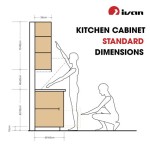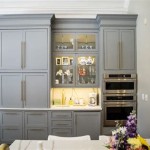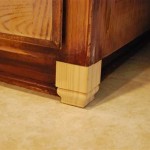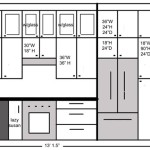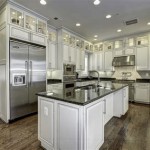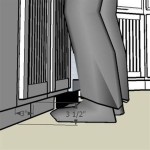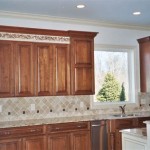Selecting Kitchen Cabinets: Essential Considerations
Kitchen cabinets are not just storage spaces. They set the tone for your kitchen's overall design and functionality. Whether you're remodeling an existing kitchen or designing a new one, selecting the right cabinets is crucial. This guide will help you navigate the essential aspects of cabinet selection, ensuring you make an informed decision.
1. Style and Design
The style of your cabinets should align with the overall aesthetic of your kitchen. Consider the architectural style of your home, the existing décor, and your personal preferences. From traditional to modern, there's a wide range of cabinet styles to choose from. Shaker-style cabinets exude a timeless appeal, while flat-panel cabinets offer a sleek and minimalist look. Select a style that complements your kitchen's ambiance and reflects your taste.
2. Material and Construction
Cabinet materials vary in durability, maintenance requirements, and cost. Solid wood cabinets are the most durable but also the most expensive. Veneer-covered plywood cabinets offer a cost-effective alternative with a similar appearance to solid wood. Laminate cabinets are moisture-resistant and come in a wide variety of colors and finishes. Consider your budget, lifestyle, and desired aesthetic when making your material selection.
3. Size and Layout
The size and layout of your cabinets should maximize storage space while ensuring functionality. Measure the available space in your kitchen and determine the ideal cabinet sizes and configurations. Consider the location and size of appliances, windows, and doors to ensure cabinets fit seamlessly. Plan for a combination of base cabinets, wall cabinets, and pantry cabinets to provide ample storage and organization options.
4. Cabinetry Features
Beyond size and style, various features enhance the functionality of your cabinets. Soft-close drawers and doors minimize noise and prevent slamming. Pull-out shelves and organizers increase accessibility and maximize storage space. Lazy Susans optimize corner cabinets, offering easy access to stored items. Consider these features to customize your cabinets and make your kitchen more efficient.
5. Hardware
Cabinet hardware, such as knobs and pulls, adds the finishing touch to your kitchen's design. Choose hardware that complements the cabinet style and overall décor. Consider the size, shape, and finish of the hardware to create a cohesive look. Brushed nickel, oil-rubbed bronze, and chrome are popular hardware finishes that can elevate the aesthetics of your kitchen.
6. Finishes and Color
Cabinet finishes range from matte to glossy, and each option creates a distinct ambiance. Consider the lighting in your kitchen and the overall style when selecting a finish. Glossy finishes reflect light and create a brighter, more modern look, while matte finishes absorb light, resulting in a softer, more understated appearance. The color of your cabinets can dramatically impact the kitchen's overall atmosphere. Choose colors that complement the countertops, backsplash, and flooring to create a harmonious design.
7. Professional Installation
Although it may be tempting to install cabinets on your own, it's recommended to hire a professional installer. Trained professionals have the experience and expertise to ensure proper installation, ensuring your cabinets function seamlessly and last for years to come. They can also advise you on the best way to maximize storage space and achieve your desired kitchen layout.

Your Guide To Choosing Kitchen Cabinets

How To Choose The Right Kitchen Cabinets

Need Help Choosing Kitchen Cabinets Our Guide
6 Tips For Choosing The Perfect Kitchen Cabinets

How To Choose A Kitchen Cabinet Color According Designers

How To Choose A Kitchen Cabinet Color According Designers

Choosing Kitchen Cabinets Colorado Springs Visit Showroom

How To Select The Perfect Kitchen Cabinets Company

Ultimate Guide To Selecting Kitchen Cabinets For Your Home

Selecting Kitchen Cabinets
Related Posts

